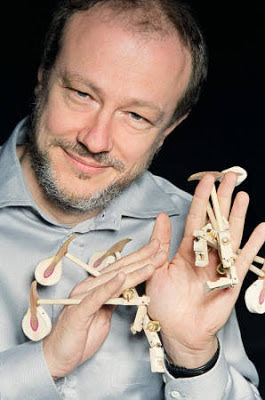Benjamin Grosvenor Returns

No one who heard Benjamin Grosvenor's Washington debut recital in 2012, on the heels of a fine debut recording with Decca, was likely to think of missing his second Washington Performing Arts appearance. An impending deluge could not keep me away from hearing this talented and intelligent British pianist again, on Tuesday night in the Kennedy Center Terrace Theater. On paper, the program was not exactly thrilling, a survey of different types of Romantic character pieces, either single works or gathered into sets, but as he played it, it offered many delights.
Mendelssohn's Rondo capriccioso in E major, op. 14, has an Andante introduction, in which Grosvenor picked out little motifs that decorated the melody. The Rondo section had a feathery lightness, clean in its detailed articulation even at a tripping tempo. When the melody went into his left hand, ingenious voicings differentiated the things swirling around it, and the bravura conclusion was big and bold. One does not hear Schumann's Humoreske, op. 20, live that often, probably because its fragmented, episodic nature makes it hard to pull off. Grosvenor set about giving flight to the many moods in the score: moony and wandering, playful, heroic, manic. At times the harshness of his fortissimo attack put the Terrace Theater instrument in an unflattering light, but the organic sense of rubato he gave the work, unraveling thick textures with many layers of voicing changes, helped give the music life. Along with an expert handling of the faster sections, Grosvenor gave the enigmatic passages just the sort of oddness Schumann likely had in mind. In between these two works was a single Schubert impromptu (G-flat major, op. 90, no. 3), a piece that is usually offered only as an encore or as part of the set. To stand on its own mid-program it would have to be extraordinary, which it was not -- very pretty, well played, with some unexpected details in the left hand, but no more.
The second half was frankly stronger than the first, focusing on music in late Romantic styles. Federico Mompou's Paisajes are three descriptive character pieces, short landscapes, and Grosvenor imbued them with translucent delicacy and pastel wisps of color, especially the purling waves of El Lago and the more dissonant Carros de Galicia. He showed the same kind of easy-going story-telling in two of Medtner's Fairy Tales, combining technical ease with a cantabile approach to the simpler passages. The repeated notes and forthright tone of the second one (op. 14/2, "March of the Paladins") were beautifully done, with each detail exceptionally clear.
Anne Midgette, British pianist Benjamin Grosvenor lives up to his reputation at Kennedy Center recital (Washington Post, May 1) |


























































